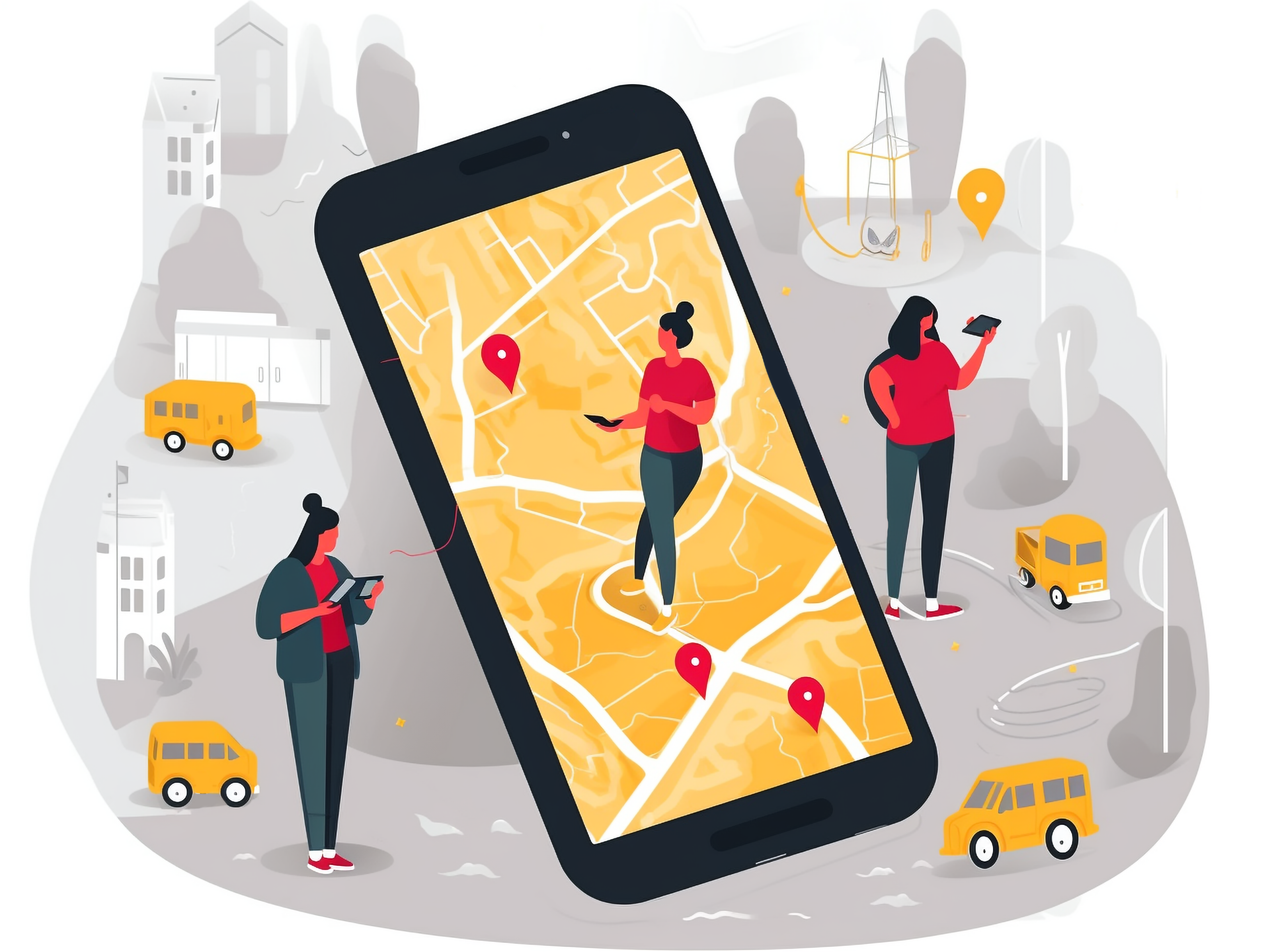Optimizing User Engagement Through Personalization
 Eugene Chernysh
Eugene ChernyshTable of contents
- The Importance of Personalization in User Engagement
- Leveraging Data for Effective Personalization
- The Role of AI and Machine Learning in real-time Personalization
- Case Study: Personalization in Travel and Mapping Services
- Challenges and Considerations in Implementing Personalization
- Conclusion: The Future of Personalization in User Engagement

My name is Eugene Chernysh. I have spent over a decade navigating the dynamic landscapes of IT management, strategy, and development. Throughout my career, I have contributed to MY.GAMES, VK (formerly Mail.ru Group), and MAPS.ME. These are just a few of the companies, where I have led key initiatives in map services, enterprise management systems, and AI-driven content creation. This journey has equipped me with deep insights into the critical role personalization plays in driving user engagement. Today, I will share my perspective on how businesses can optimize user engagement through effective personalization strategies.
The Importance of Personalization in User Engagement
Today’s users are bombarded with information and choices, and personalization has become a critical factor in enhancing user engagement. These days, users expect tailored experiences that cater to their specific needs, preferences, and behaviors.
Personalization is not just a trend; it is a necessity for businesses seeking to build long-term relationships with their users. As technology continues to evolve, the methods and tools available for personalization are becoming more sophisticated, allowing businesses to understand and anticipate user needs with greater accuracy.
Leveraging Data for Effective Personalization
One of the key drivers of personalization is data. The ability to collect, analyze, and interpret user data is what allows businesses to deliver personalized experiences. Reflecting on my time at companies like MY.GAMES and VK, we leveraged massive user datasets to understand user behaviors and preferences, enabling us to create highly targeted content and services.
For instance, at VK Maps, we processed over 30 billion requests to geo-services monthly, which provided us with a wide range of data on user behavioral patterns and their preferences. By analyzing this data, we were able to optimize search and route planning, achieving accuracy levels comparable to major competitors like Google Maps and Yandex Maps. This enhanced the user experience and resulted in significant cost savings.
The Role of AI and Machine Learning in real-time Personalization
Artificial Intelligence and Machine Learning have revolutionized the way businesses approach personalization. These technologies enable real-time data analysis and decision-making, allowing for more dynamic and responsive user experiences. For example, AI-driven recommendation systems can predict what content or products a user is likely to be interested in based on their past behavior, leading to increased engagement and conversion rates.
At MY.GAMES, we implemented an internal AI visual content creation system that utilized machine learning to generate personalized content for users. This system allowed us to create tailored experiences at scale, driving user engagement by delivering content that was both relevant and engaging.
Case Study: Personalization in Travel and Mapping Services
The travel industry is one area where personalization can have a profound impact on user engagement. During my tenure at MAPS.ME, we focused on delivering personalized travel experiences by analyzing user data to offer tailored recommendations for destinations, travel guides, and attractions. By partnering with various service providers, we were able to enhance our offerings and drive significant growth in user metrics and revenue.
For example, a user planning a trip to a new city could receive personalized recommendations for hotels, restaurants, and attractions based on their previous travel history and preferences. This level of personalization improves the user experience and encourages users to engage more deeply with the platform, leading to higher retention rates.
Challenges and Considerations in Implementing Personalization
Implementing personalization strategies is not without its challenges. Here, we’ll explore some of the key challenges, providing relevant industry examples to illustrate each point.
Data Management and Quality
One of the most significant challenges in personalization is managing and maintaining the quality of data. Personalization efforts rely heavily on accurate, consistent, and up-to-date data, but businesses often struggle with data that is siloed across various systems, inconsistent, or outdated. For example, in large e-commerce platforms, customer data might be spread across multiple databases, making it difficult to integrate and synchronize this data in real-time. This can lead to poor personalization efforts, where users receive irrelevant or incorrect recommendations, negatively impacting their experience and trust in the brand. To mitigate this, companies need to invest in robust data management systems that ensure data accuracy and consistency across all touchpoints.
Balancing Privacy and Personalization
With increasing regulations like GDPR and CCPA, businesses face the challenge of balancing the need for data to personalize experiences with the necessity of protecting user privacy. Consumers today are more aware and concerned about how their data is used, and any breach of trust can have severe repercussions. For instance, companies must navigate these privacy concerns by obtaining clear user consent and being transparent about data usage. This challenge is particularly relevant for companies operating in jurisdictions with strict data protection laws, where failure to comply can result in hefty fines and damage to reputation.
Scalability of Personalization Efforts
As businesses grow so does the complexity of delivering personalized experiences at scale. The challenge lies not only in handling the increased volume of data but also in ensuring that personalization efforts remain effective across a larger and more diverse user base. For example, a business might successfully implement personalized recommendations for a small segment of users but struggle to maintain the same level of relevance when scaling to millions of users across different regions and languages. This scalability issue often requires significant investment in technology and infrastructure, such as AI-driven personalization engines that can adapt to growing datasets and changing user behaviors.
Technological Integration and Real-Time Delivery
Another challenge is the integration of various technologies needed to execute personalization strategies effectively. Businesses often rely on a complex tech stack, including CRM systems, data management platforms, and marketing automation tools. Ensuring these systems work together seamlessly is crucial for real-time personalization, where user experiences are tailored on-the-fly based on their interactions. However, many companies struggle with the orchestration of these technologies, leading to delays or inaccuracies in personalization. For example, real-time recommendation systems, such as those used by Netflix or Amazon, require a highly coordinated backend to deliver relevant content instantaneously. Without proper integration, the promise of real-time personalization can fall flat, resulting in missed opportunities to engage users.
Content Creation and Management
Finally, the demand for personalized content can overwhelm organizations, especially when trying to deliver personalized experiences across multiple channels. Crafting and managing a vast array of content variations for different user segments can be resource-intensive. For instance, creating personalized email campaigns, website content, and social media posts for various audience segments requires a well-organized content management system (CMS) and a clear strategy to avoid bottlenecks. Companies that fail to streamline this process may find themselves unable to meet the demand for personalized content, leading to inconsistent user experiences.
Conclusion: The Future of Personalization in User Engagement
Overcoming the challenges of implementing personalization—such as data management, privacy concerns, scalability, technological integration, and content creation—is crucial for businesses aiming to deliver personalized experiences that truly engage users. Success in personalization requires a strategic approach that involves the right technology, robust data practices, and a commitment to balancing privacy with personalization.
Companies that navigate these complexities effectively will not only meet but exceed user expectations, driving deeper engagement and long-term loyalty. Those who invest in managing these challenges will be well-positioned to harness the full potential of personalization, ensuring sustained competitive advantage in the ever-changing digital landscape.
Subscribe to my newsletter
Read articles from Eugene Chernysh directly inside your inbox. Subscribe to the newsletter, and don't miss out.
Written by
